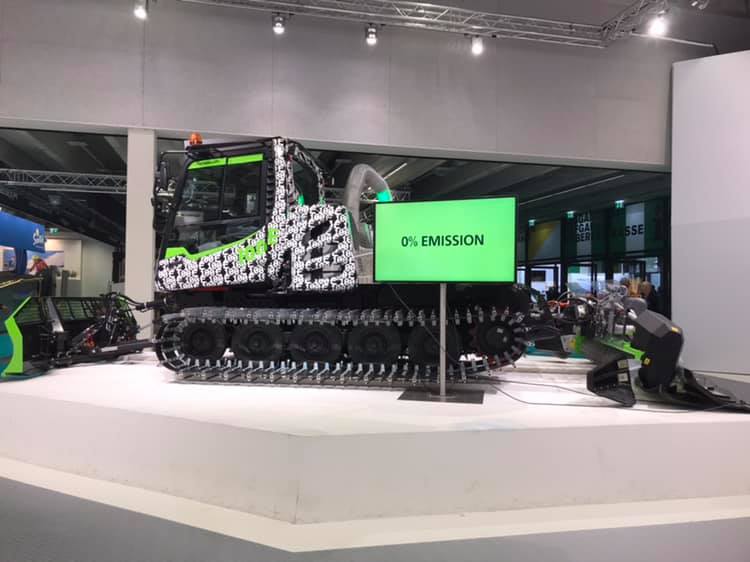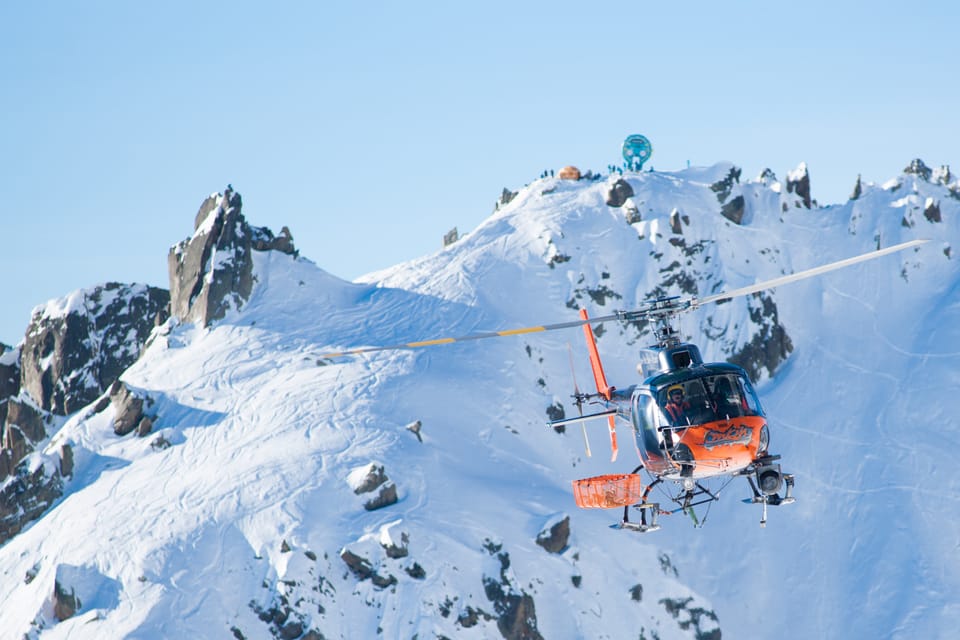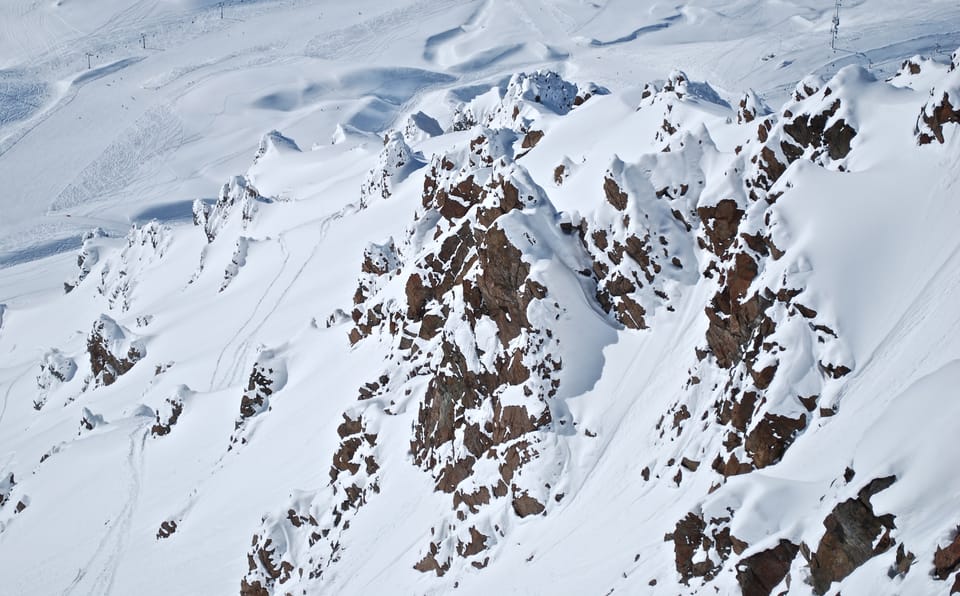100% Electric Piste Groomer Unveiled
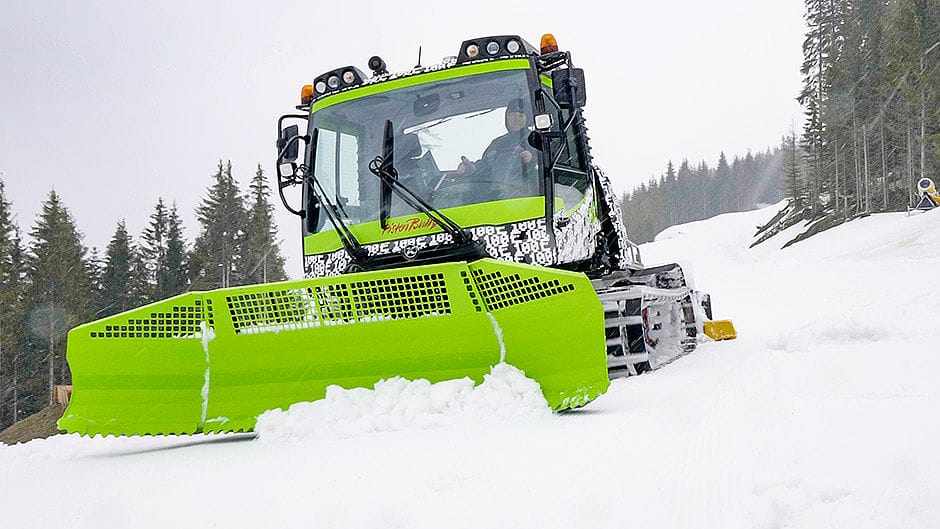
One of the big factors in the battle to make ski resorts 100% green powered has been the grooming tractors (or ‘piste bashers’).
Whilst it is possible to power lifts, snowmaking and almost everything else with renewable electricity, in quite a few cases now actually generated on site with local wind, solar or hydro schemes, sometimes producing much more than the ski area needs and exporting to the grid, the groomers have still needed diesel.
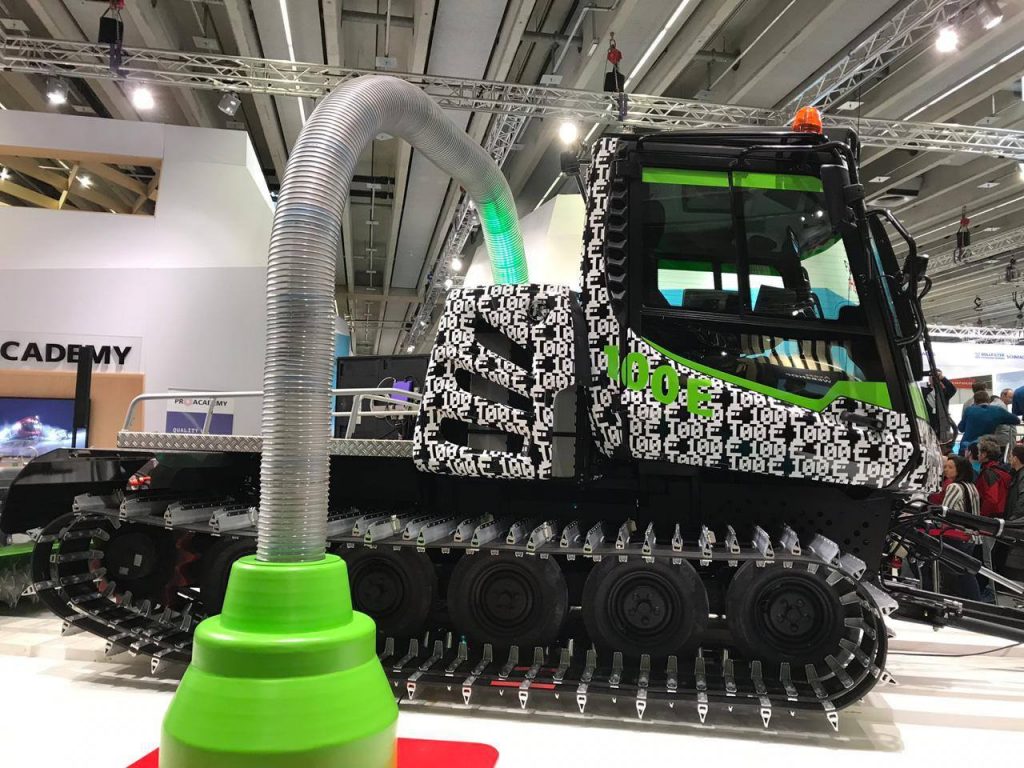
There are somewhere between 10,000 and 20,000 groomers working on the world’s ski slopes each evening through the season too.
There have been big steps forward in efficiency with attempts to run groomers on bio-diesel, with hybrid engines and diesel electric drives.
The introduction of satellite technology has enabled groomer operators to track where the snow is deepest and thinnest and move it around as efficiently as possible as well as making inch perfect laps each night so that not a drop of fuel is wasted. Operating costs for these machines are so high that maximum efficiency is an economic imperative as well as an environmental one.

One design patent envisaged a machine able to cover a much greater slope area with one pass and a very low emission mini groomer has been created specifically for indoor snow centres where skiers and boarders within a large metal box don’t want to be breathing in diesel fumes..
However there may now be a break-through as the recent big push for electric vehicles reaches the groomer market.
The world’s biggest groomer manufacturer Kassbohrer recently unveiled the first fully electric groomer at the big Interalpin trade show in Innsbruck this month.
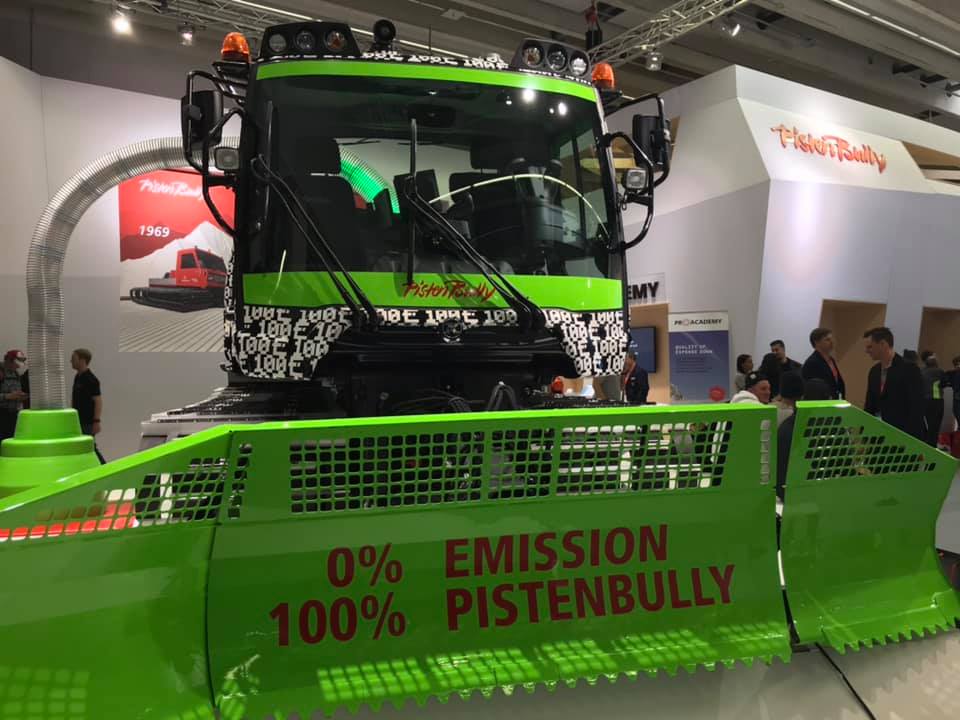
The new machine, the PistenBully 100 E, isn’t oin sale yet but the company says it has been tested in real world environment (ski slopes…) and the initial results are good.
The energy capacity of the 100E’s battery is 126 kWh with a rated voltage of 400V and this can be 75% charged within five hours or fully charged in 6.5 hours.
So far the full charge provides an average driving time of 2.5 to 3 hours so not enough for a full night shift, but the aim is to increase this as the model advances.
A company spokesperson described initial testing as, “Highly promising.”
There’s no word as yet as to when the machine will be on sale.
